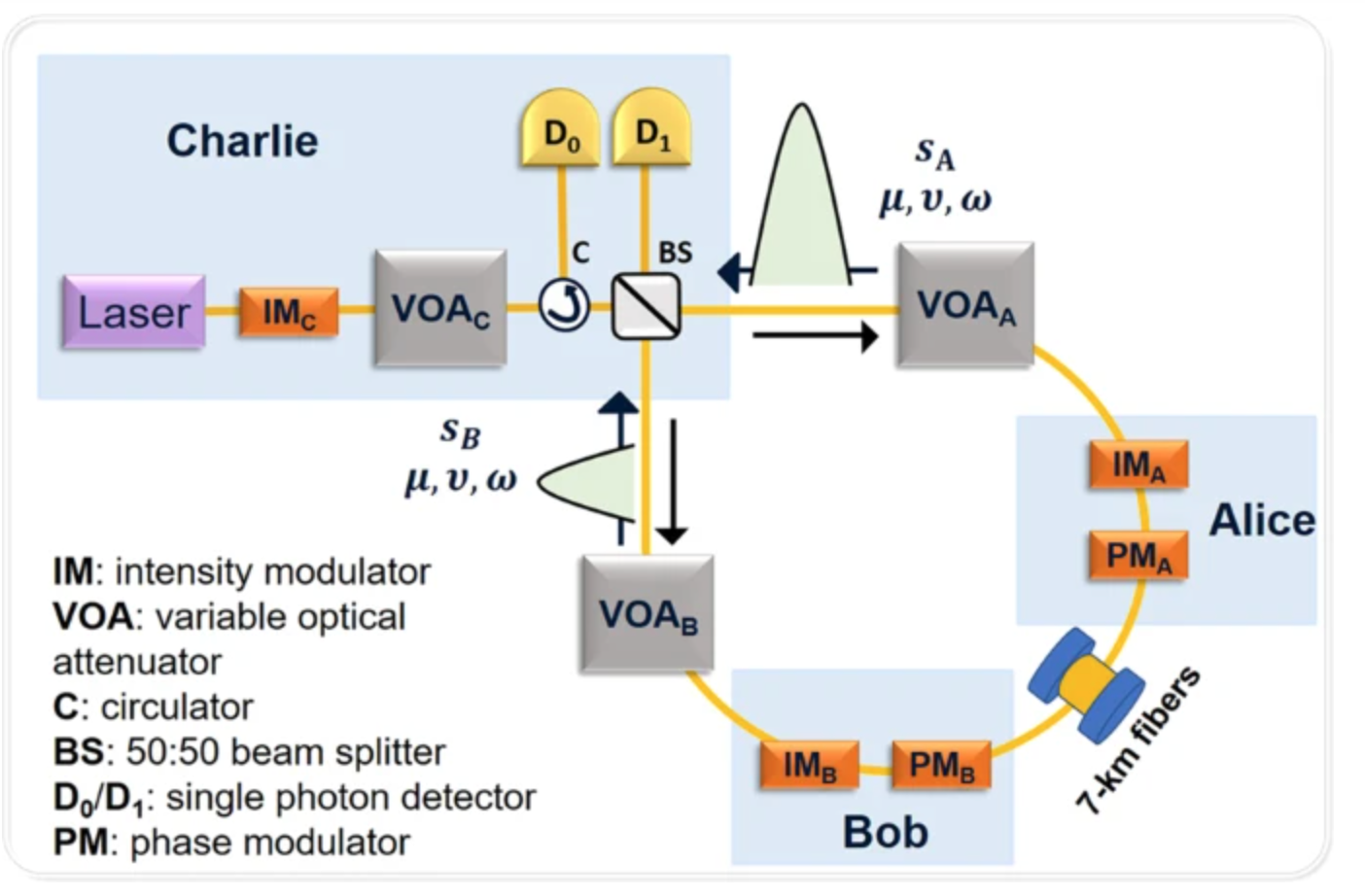Research
Our group conducts groundbreaking research to advance the fields of quantum entanglement, quantum communication, and high precision metrology. We have lab members with diverse backgrounds and interests, working together on different physics and engineering problems.
Quantum Entanglement
Entanglement, the phenomenon where characteristics of a particle are correlated with characteristics of other particles regardless of their physical separation, is the foundation of many quantum information technologies. In our lab, we are building practical, room-temperature entangled photon sources for future quantum communication networks. Based off type-II spontaneous parametric down-conversion in periodically poled silica fiber, the entangled photons in our sources are generated completely in optical fiber, allowing for low loss integration with existing telecommunication networks. We have produced separate broadband sources centered at the minimum attenuation wavelength of optical fibers, 1550nm, as well as the zero-dispersion wavelength, 1300nm.

The entanglement between the photon-pairs in our sources is present in both the polarization and the frequency degrees of freedom. By cascading two or more sources with a tunable linear medium in between, we have generated photon-pairs whose entanglement properties can be tailored in both the polarization and the frequency domains.

Quantum Communication
Quantum communication uses the nature of quantum mechanics to explore the information processing tasks. The main goal of our study is to find tasks where quantum communication shows significant advantages over its classical counterpart. Among different quantum communication protocols, quantum key distribution (QKD) is a representative example, which enables remote users to share encryption keys with information-theoretic security. Compared with classical public key encryption system, the security of which depends on the computation difficulty of certain mathematic functions, the encryption system with QKD has provable security that relies on the foundation of quantum mechanics.

In our group, we are working on building different QKD systems, aiming at making QKD more practical and feasible for real world applications. Different QKD protocols are involved in our research, such as measurement device independent QKD which removes all the detector side channel attacks, and twin field QKD which can practically beat the fundamental key rate limit for the conventional point-to-point QKD protocols. Besides the study of QKD, we are also working on some other quantum communication system, such as quantum communication complexity (QCC), which explores the minimum amount of communication required to solve a problem. It turns out that, by using quantum superposition or entanglement, many quantum protocols of communication complexity are more efficient, that is, they require less communication than the classical communication protocols. Our work is to experimentally prove the quantum superiority of these protocols over their classical counterparts.
High Precision Sensing
We have demonstrated an approach to realize a real-time tunable sub-MHz spectral feature without resonators, without loss, and at room-temperature by using a polarization dependent gain in combination with elliptically birefringent medium. As a specific realization, we used stimulated Brillouin gain and spun birefringent fibers, and obtain a spectral dip in the Brillouin gain spectrum. The linewidth of this dip is equivalent to a Q-factor of 300 million, and with optimal fiber parameters, we can achieve a Q-factor of 2 billion! This is the narrowest Brillouin feature reported till date. Currently, we are using this feature for applications such as high precision sensing, slow light generation, and microwave photonics.
